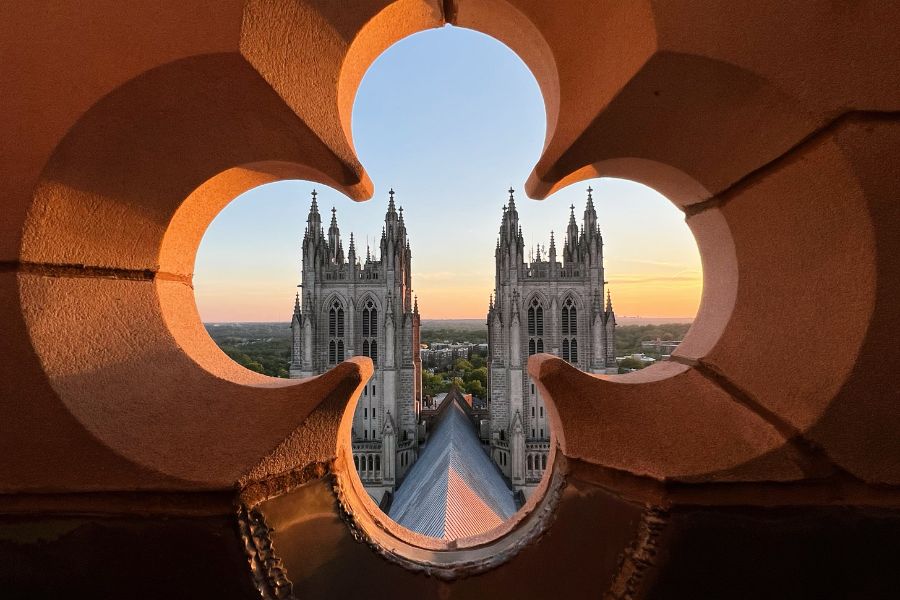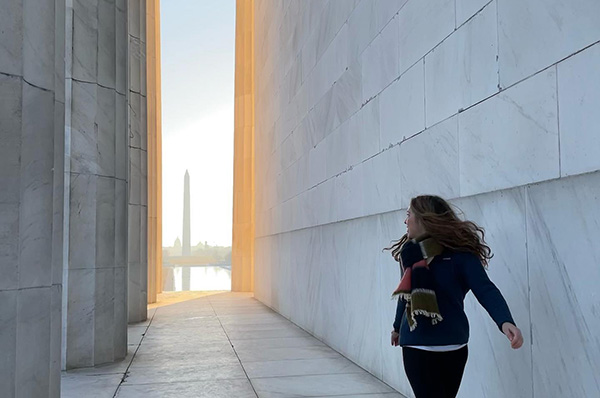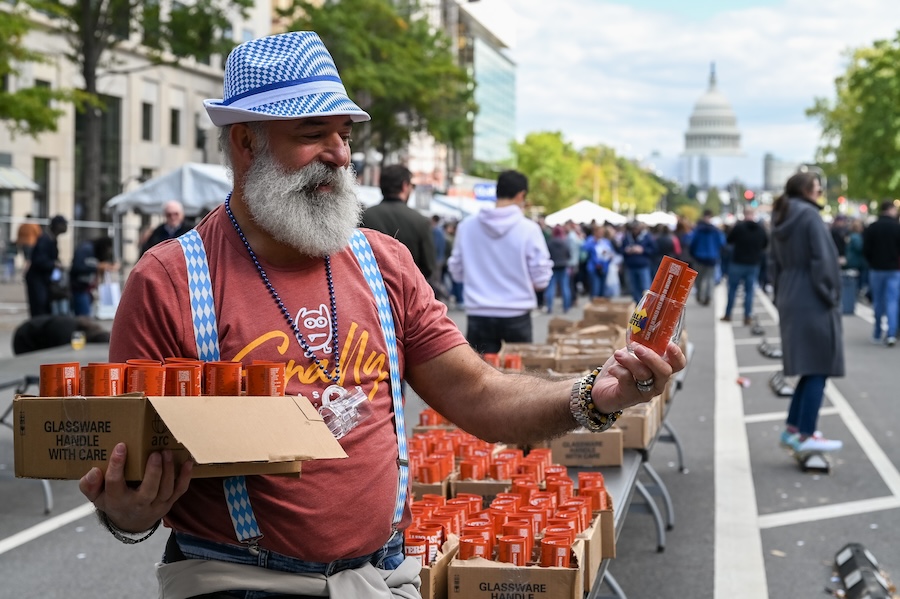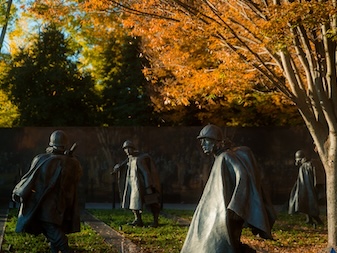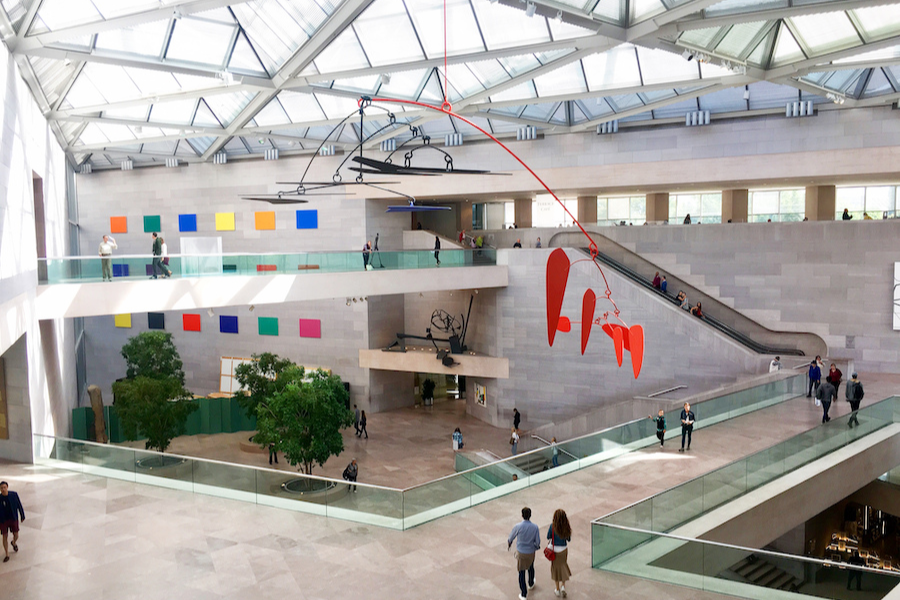
MAP IT
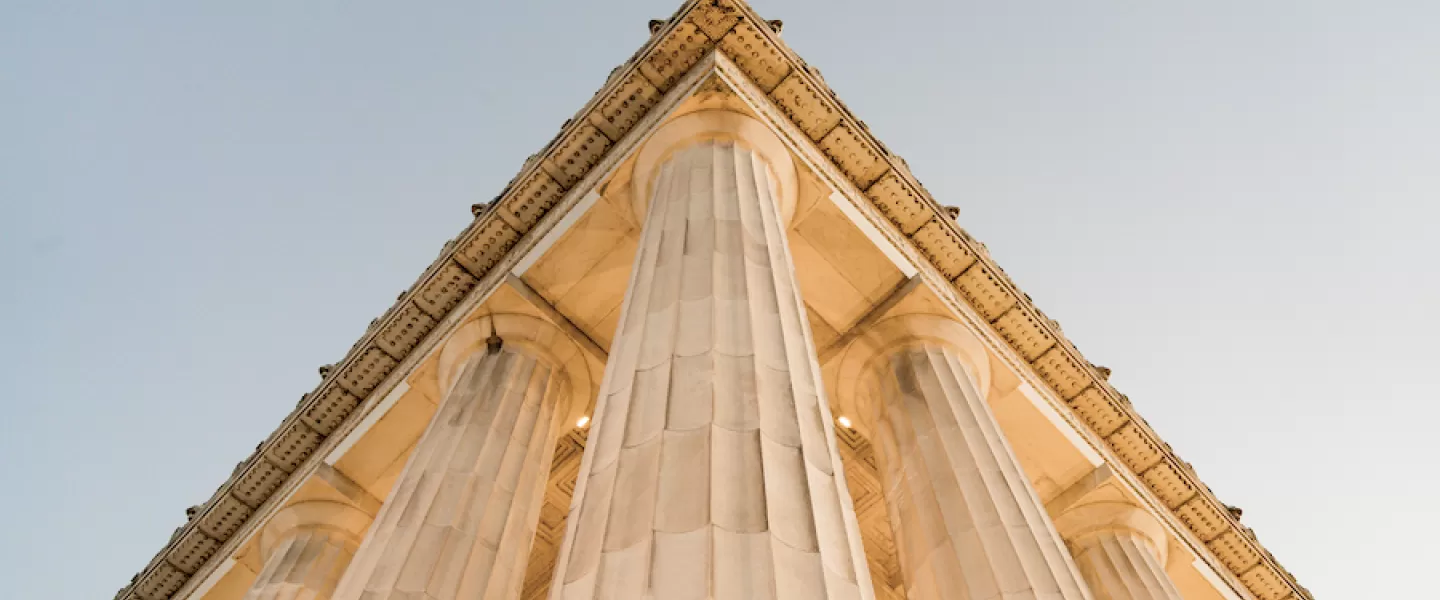
DC’s Top 10 Must-See Sites for Architecture Lovers
Washington, DC’s architecture reflects its history, creativity and role on the world stage, ranging from quintessential neoclassical monuments to innovative museums.
Often called the Paris of the U.S., Washington, DC is a city where architecture shapes the visitor experience at every turn. Wide boulevards, thought-provoking memorials and a mix of design styles make exploring the nation’s capital both visually and historically rich.
Named one of Architectural Digest’s top 19 places to travel in 2026, DC appeals to fans of classical design, bold modernism and everything in between.
Discover some of the city's can't-miss architectural landmarks below.
01
National Gallery of Art East & West Wings

The Neo-classical West building of the National Gallery of Art was designed by John Russell Pope and completed in 1941, utilizing funds and a donated collection from the American businessman, philanthropist, and art collector Andrew W. Mellon. In 1971, construction began on the National Gallery's East Wing, designed by I.M. Pei and dedicated to modern and contemporary art. The new and old buildings share symmetry and an east-west axis, as well as the same pink Tennessee marble exterior cladding.
02
Washington National Cathedral
The Neo-Gothic National Cathedral stands as the third-tallest building in Washington, DC, and is one of the most majestic structures in the city. Designed by architects George Frederick Bodley, Henry Vaughan, and Philip Hubert Frohman, the Cathedral's construction spanned 81 years. While officially affiliated with the Episcopal denomination, the Cathedral's leadership has aimed from the beginning to provide "a house of prayer for all people." The Cathedral has served as the venue for presidential state funerals, memorial services for prominent American figures, and even hosted Martin Luther King Jr.'s last Sunday sermon in 1968. On the exterior, keep an eye out for 112 gargoyles and over 3,000 grotesques and other architectural carvings, including an elephant, a pigtailed girl with braces and Darth Vader.
03
National Museum of African American History and Culture
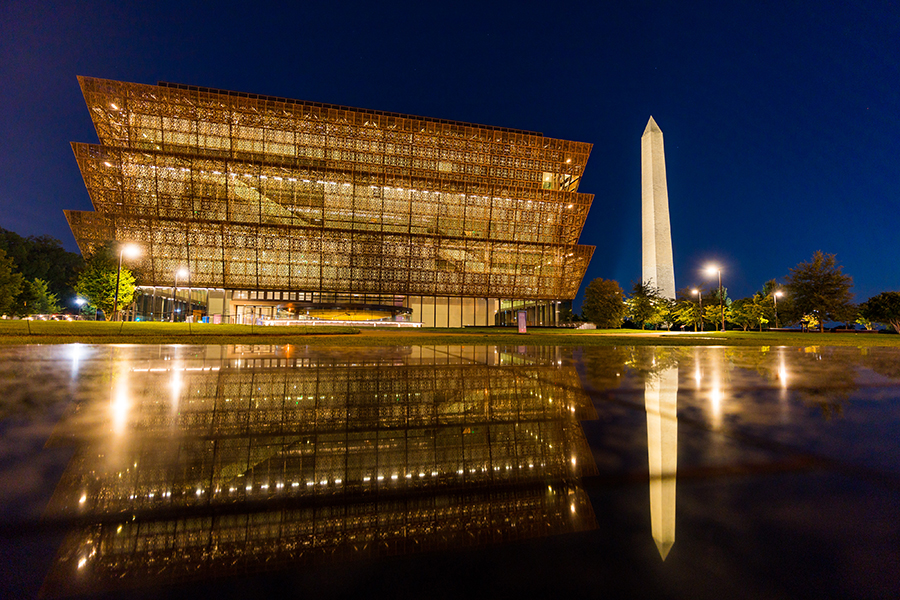
While the National Museum of African American History and Culture makes a bold architectural statement on the National Mall, it was also the first buildings on the Mall designed to LEED Gold sustainability standards. In 2009, lead designer David Adjaye and lead architect Philip Freelon, together with their architectural team Freelon Adjaye Bond/SmithGroup won an international competition for their proposed museum design. Take note of the three-tiered façade, inspired by three-tiered crowns used in Yoruban art from West Africa, as well as the façade’s intricate latticework, a homage to ironwork crafted by enslaved African Americans.
04
National Museum of the American Indian
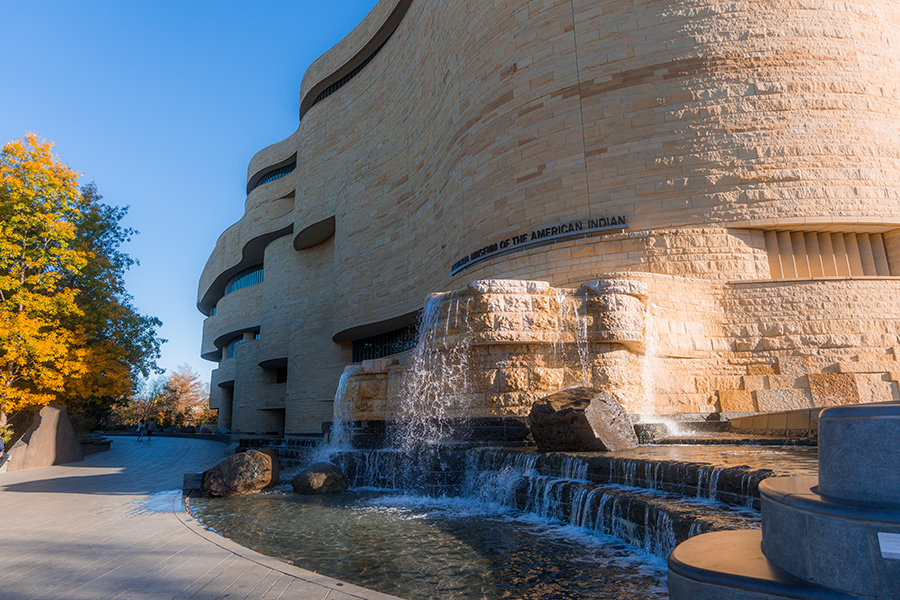
With initial designs by Native American architect Douglas Cardinal, the National Museum of the American Indian’s curvilinear form and Kasota limestone exterior make it one of the National Mall’s most distinctive buildings, as well as one of the newest–it was completed in 2004. Step inside to experience the most extensive collection of Native American art and artifacts in the world.
05
Smithsonian Institution Building
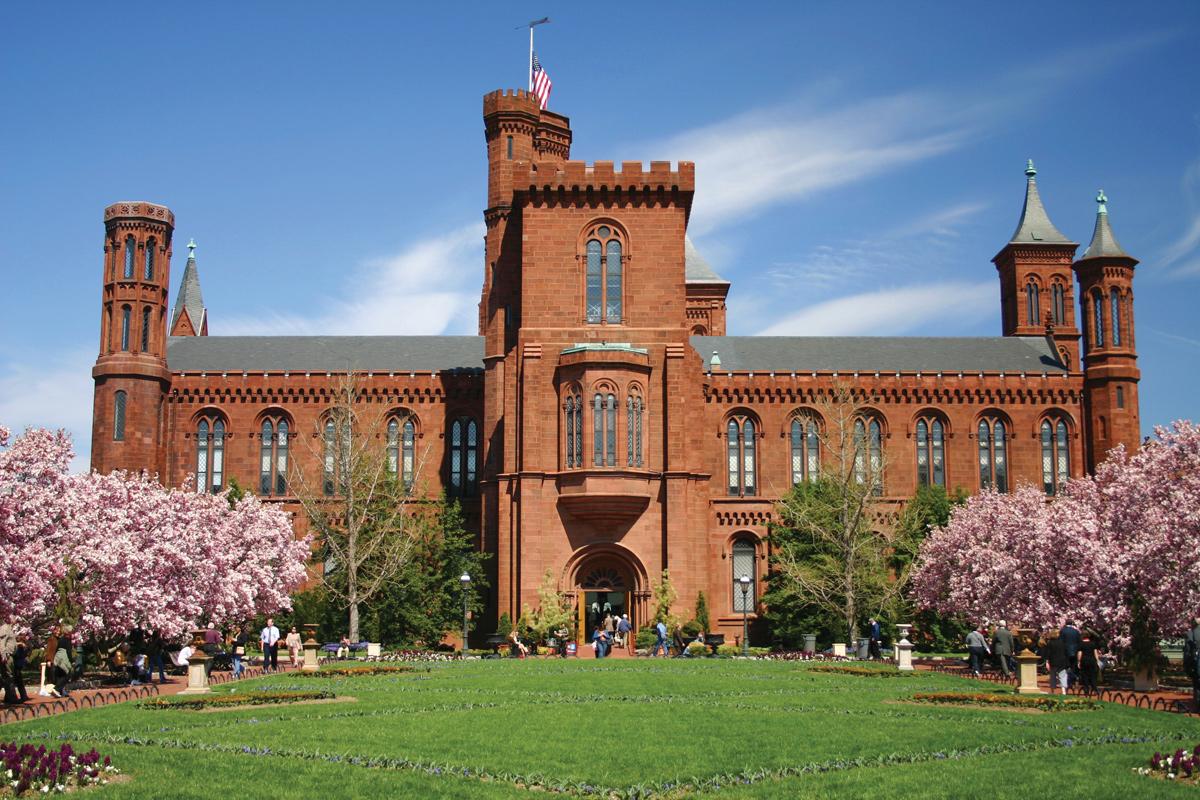
As the Smithsonian’s first and oldest building, “The Castle” has been standing proudly since 1855 on a site that would eventually become part of the National Mall. It was designed by architect James Renwick Jr. in a style that combines late Romanesque and early Gothic motifs. While the Castle closed in early 2023 for a major renovation that’s expected to last about five years, visitors can still take in the building’s grand sandstone exterior and pay a visit to the Smithsonian Gardens on the Castle grounds.
06
Lincoln Memorial
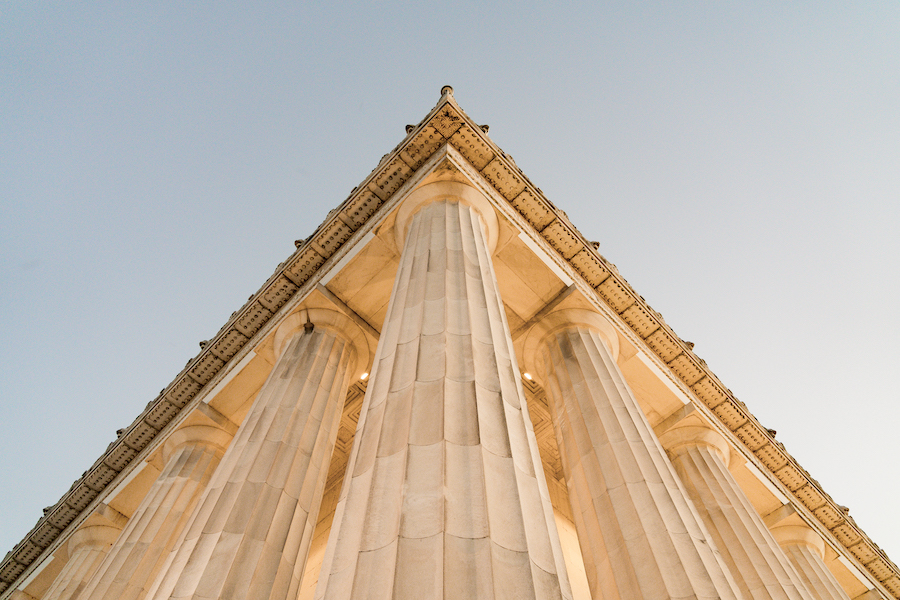
As one of the most iconic monuments on the National Mall, the neoclassical Lincoln Memorial, designed by New York architect Henry Bacon in the style of a Greek temple, is must-see. Once you've finished marveling at the grandeur of the 19-foot statue of a seated Lincoln by renowned sculptor Daniel Chester French, take note of the symbolic elements strategically placed around the memorial: the 36 columns represent the states of the Union at the time of Lincoln’s death, and the 48 carved festoons above each column represent the number of states in 1922 when the memorial was completed.
07
Library of Congress Thomas Jefferson Building
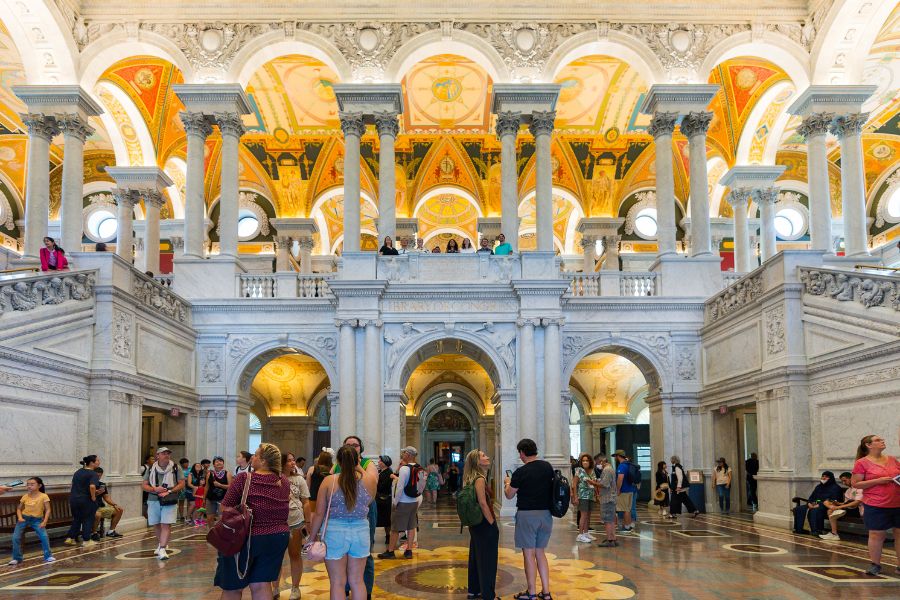
The Thomas Jefferson Building, also recognized as the Main Library within the Library of Congress, stands as a magnificent example of Beaux Arts architecture, reaching completion in 1897. The collaborative efforts of architects John L. Smithmeyer, Paul J. Pelz, and Edward Pearce Casey contributed to the final design of this grand edifice. During its construction, over fifty American painters and sculptors were commissioned to create art pieces for the library, and their remarkable works still adorn the building today. The interiors of the Thomas Jefferson Building are a testament to opulence and artistic finesse, consistently leaving visitors to the nation's capital in awe. Access to this architectural marvel is granted through timed entry passes, allowing patrons to explore its intricately adorned spaces and engaging exhibits at their own pace.
08
National Building Museum
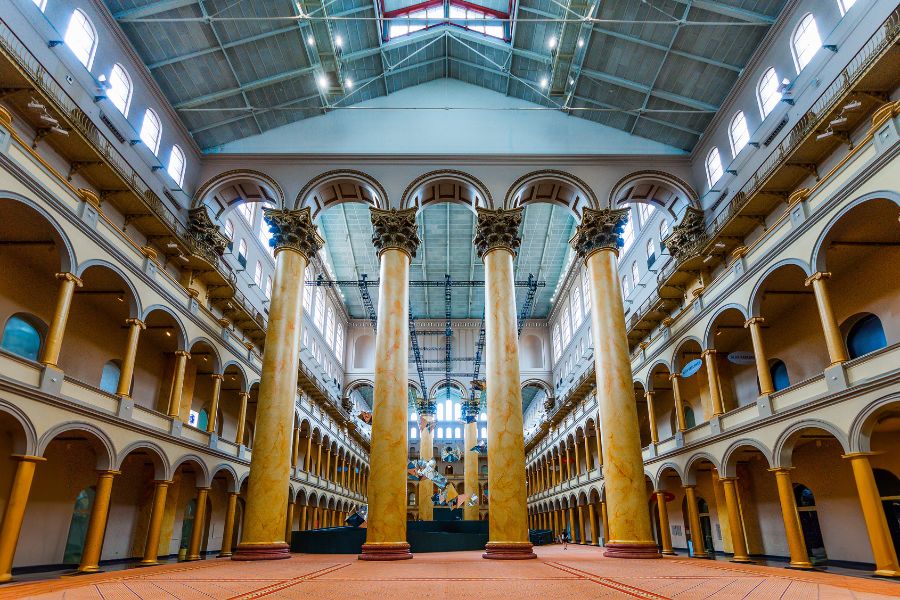
Originally commissioned by Congress in 1881 as the headquarters of the U.S. Pension Bureau, the building that now houses the National Building Museum has been a part of DC’s urban fabric for over a century. U.S. Army Quartermaster General Montgomery C. Meigs, who was appointed as both the architect and engineer, designed the building’s interior to feature open arcade galleries surrounding a central hall, inspired by 16th-century Roman palaces. On the building’s exterior, the 1,200-foot-long terra cotta frieze commemorates Union Soldiers who fought in the Civil War.
09
Union Station
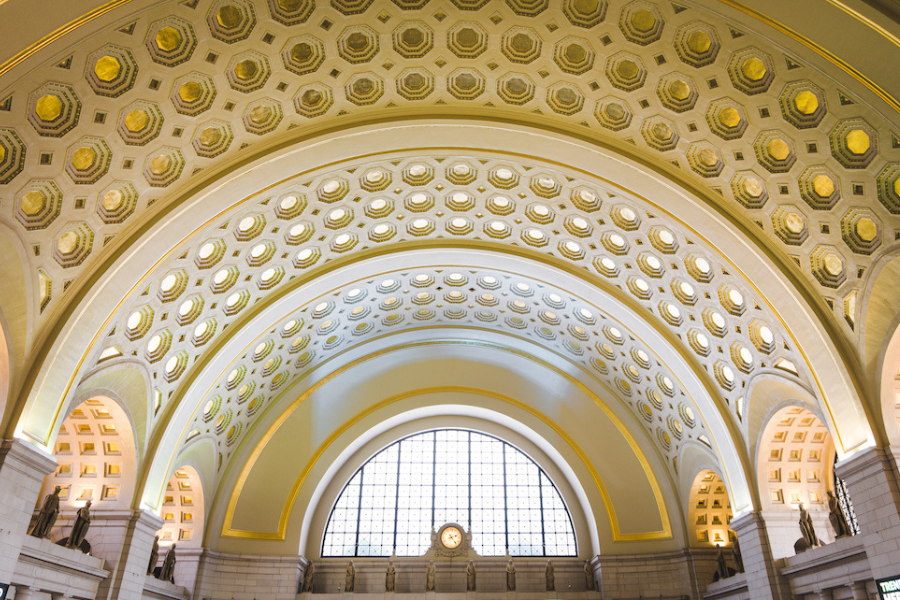
Designed by renowned Chicago architect Daniel Burnham, the circa-1907 Washington Union Station serves Amtrak’s Northeast Corridor, the busiest passenger rail line in the nation. Keep an eye out for the Main Hall’s vaulted ceilings and its gold leaf detailing, carefully restored in 2016. A full transformation of Union Station is planned.
10
Department of Housing and Urban Development Robert C. Weaver Building
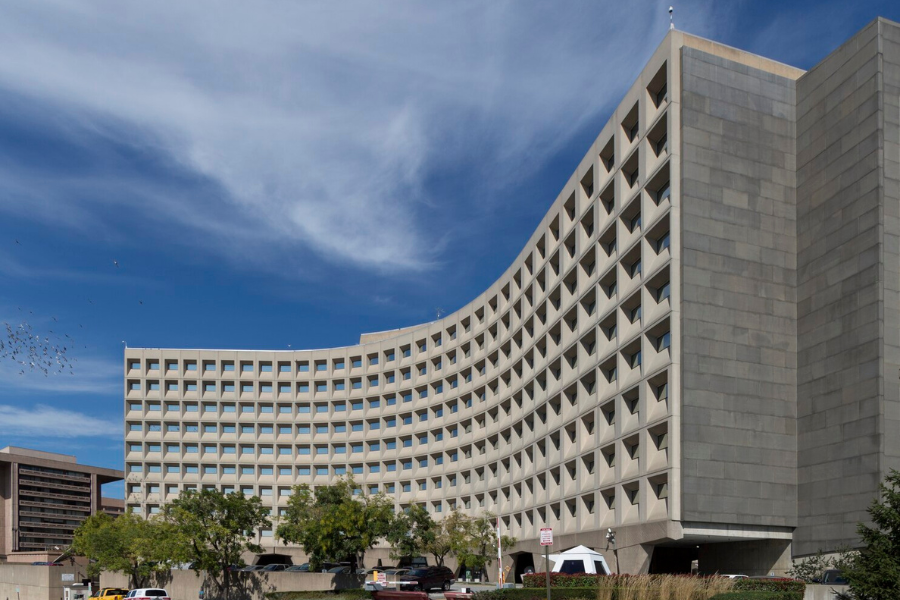
For lovers of Brutalism, DC’s government buildings offer ample eye candy. A prime example is the Department of Housing and Urban Development’s 10-story Robert C. Weaver building, completed in 1968. It’s also one of two Marcel Breuer-designed buildings in the city: the other is the Department of Health and Human Services Hubert H. Humphrey Building.

